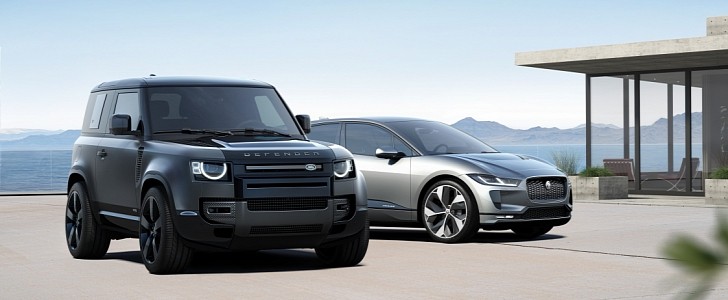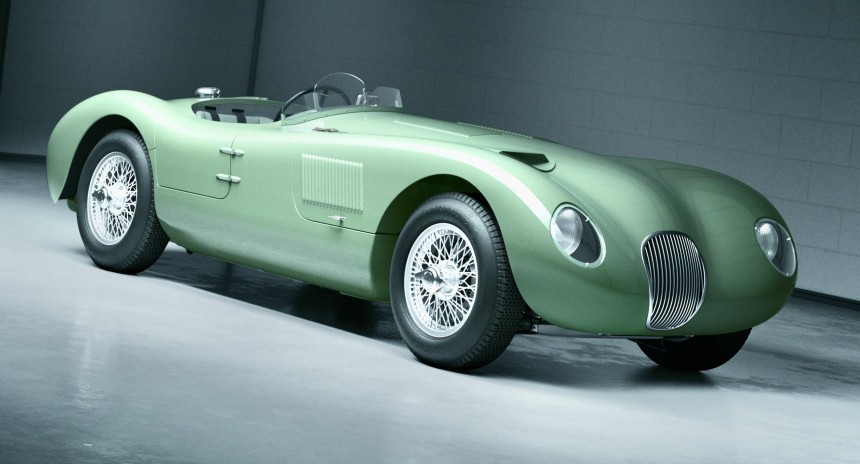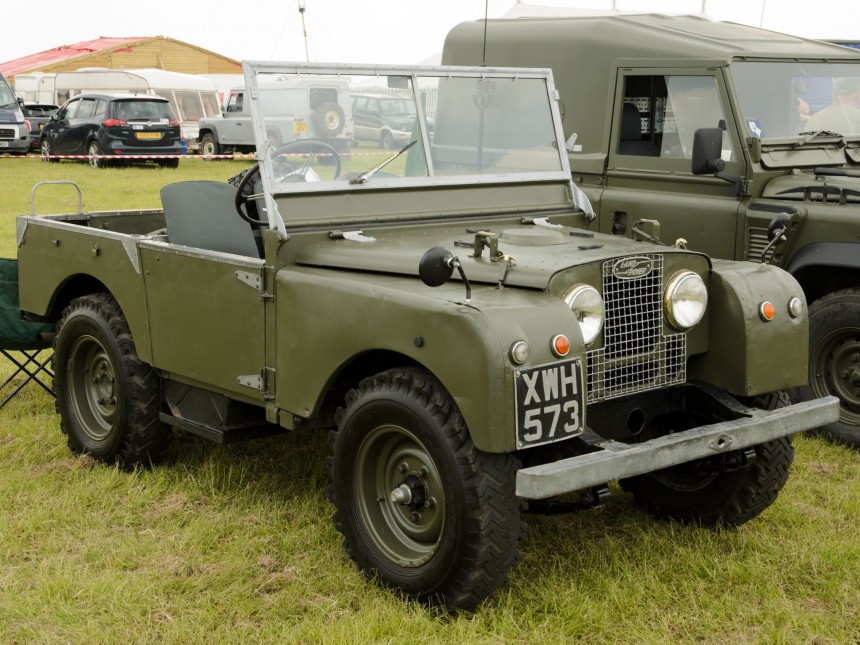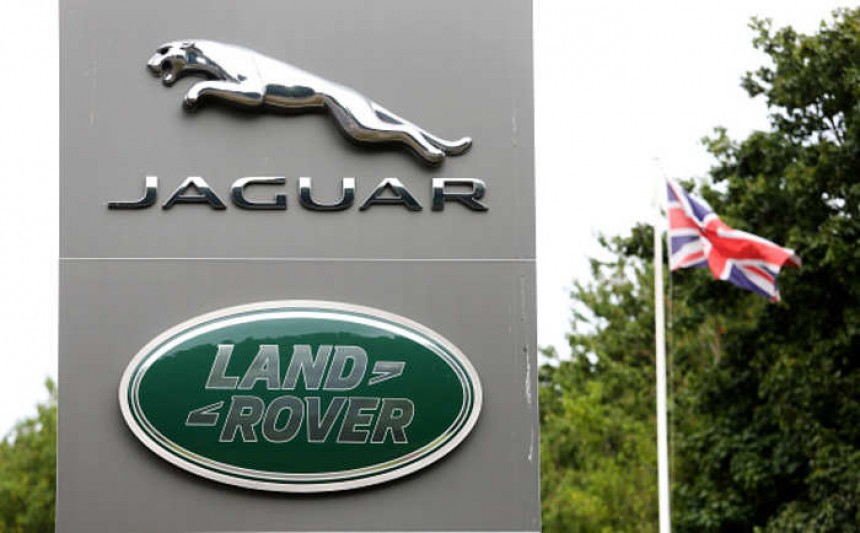A short while ago, we showed you how the once-mighty British automotive industry slowly and painfully lost nearly all of its most famous brands in a manner that makes Mercury's and Pontiac's deaths overseas seem like a slap on the wrist.
Two iconic monikers of the industry, Jaguar and Land Rover, seem to find themselves under the same umbrella more often than not. Is it by blind luck, cruel fate, and endless calamities that always seem to keep these two British automakers so close to each other's orbits?
As you'll find, the answer is yes, but it's far more complicated than that. Let's take a look back through the pages of history to learn the true origin of Land Rover and Jaguar's cooperation. It's quite the interesting little story. Of course, think of this as the abridged story, as categorizing each model down to the minute year would take days.
The genesis of the Jaguar and Land Rover brands originate either just before or just after the Second World War. With Jaguar's birth celebrated in 1933, but beginning under the Swallow Sidecar Company name in the early 20s, soon chaging to SS Cars Limited in 1933, and Jaguar Cars Limited in 1935. Meanwhile, Land Rover would have to wait until after the war. The first Land Rovers were based upon American Willys Jeep platforms and soon made 4x4s more capable than the Jeep itself with the Series I, II, and III.
For around two decades, the two brands existed separately, operating under the Rover Group beginning in 1947-48 in the case of Land Rover and British Motor Corporation in the case of Jaguar, starting in 1965. By 1968, the merger of Leyland Buses and a few other famous makers like Austin-Morris into the BMC family prompted the creation of British Leyland, of which Jaguar was a stalwart member. By 1968, Land Rover had entered the British Leyland group as well.
For the first of several times, Jaguar and Land Rover found themselves under the very same roof. During this time, classics from the respective brands like the Range Rover and the Jaguar E-Type cemented the two as mainstays of high-end British motoring. At a time when British Leyland seemed obsessed with sabotaging their own success, these two models proved to give some level of stability for the company in the long run.
This time under the same umbrella promptly ended in the mid-to-late 1980s. Change began firstly when Land Rover was sold to the Germans at BMW, spending time under the same corporate structure as Rolls-Royce during this period.
Land Rover was then sold to Ford by 2002. Coincidentally, Ford had also purchased Jaguar around the turn of the century, after failing to operate independently between 1984 and 1998. By 1999, the Jaguar brand was a wholly-owned subsidiary of Ford.
This time was a polarizing period for both Jaguar and Land Rover. Changes to the Range Rover had left it a leather-covered, highly refined afront to the team that first designed it. Charles Spencer King, the man who first designed the Classic Range Rover, was vocal about his objection to what the Range Rover had become at that point.
Meanwhile, the retro-styled wet noodle of a Jaguar S-Type was trying and failing to capture the same essence that the E-Type and so many other classic Jags had fostered back in the 60s and 70s. Motoring journalists across the land all halied it as a massive dissapointment.
Land Rover and Jaguar joined Lincoln, Mercury, Aston Martin, and Volvo under Ford control via the Premier Automotive Group in 1999. By 2010, the venture was defunct and declared a monumental failure of the highest order.
Sadly, the second boogaloo between Land Rover and Jaguar seemed to have all the impact of the wet noodle we just compared to the S-Type Jaguar. The two managed to jump the sinking Ford ship two years before its inevitable downfall, hitching a new owner under the Indian Tata Group.
As one of the largest automotive manufacturers native to India, there were at least no worries about the new Jaguar-Land Rover merger under the Tata corporate family. Tata has again helped transform Land Rover by introducing popular models like the Range Rover Evoque and the all-new Defender to their credit.
In recent years, shared engine technology between Land Rover and Jaguar models has also been beneficial to the brand's image, specifically the 3.0-liter straight-six gasoline Ingenium engine.
All the while, it was under the Tata group that Land Rover acquired Bowler Manufacturing, makers of the Wildcat rally truck, to form the Land Rover SVO performance brand. A horsepower-focused tuning moniker on the same level as AMG in Germany and SRT in the U.S., just focused on 4x4s this time around.
To this day, JLR maintains several manufacturing facilities for Jaguar-Land Rover in the United Kingdom and remains one of the nation's top exporters of motor vehicles. Not a bad way to shake off the British Leyland stink. Check back for more from Land Rover month right her on autoevolution.
As you'll find, the answer is yes, but it's far more complicated than that. Let's take a look back through the pages of history to learn the true origin of Land Rover and Jaguar's cooperation. It's quite the interesting little story. Of course, think of this as the abridged story, as categorizing each model down to the minute year would take days.
The genesis of the Jaguar and Land Rover brands originate either just before or just after the Second World War. With Jaguar's birth celebrated in 1933, but beginning under the Swallow Sidecar Company name in the early 20s, soon chaging to SS Cars Limited in 1933, and Jaguar Cars Limited in 1935. Meanwhile, Land Rover would have to wait until after the war. The first Land Rovers were based upon American Willys Jeep platforms and soon made 4x4s more capable than the Jeep itself with the Series I, II, and III.
For around two decades, the two brands existed separately, operating under the Rover Group beginning in 1947-48 in the case of Land Rover and British Motor Corporation in the case of Jaguar, starting in 1965. By 1968, the merger of Leyland Buses and a few other famous makers like Austin-Morris into the BMC family prompted the creation of British Leyland, of which Jaguar was a stalwart member. By 1968, Land Rover had entered the British Leyland group as well.
This time under the same umbrella promptly ended in the mid-to-late 1980s. Change began firstly when Land Rover was sold to the Germans at BMW, spending time under the same corporate structure as Rolls-Royce during this period.
Land Rover was then sold to Ford by 2002. Coincidentally, Ford had also purchased Jaguar around the turn of the century, after failing to operate independently between 1984 and 1998. By 1999, the Jaguar brand was a wholly-owned subsidiary of Ford.
This time was a polarizing period for both Jaguar and Land Rover. Changes to the Range Rover had left it a leather-covered, highly refined afront to the team that first designed it. Charles Spencer King, the man who first designed the Classic Range Rover, was vocal about his objection to what the Range Rover had become at that point.
Land Rover and Jaguar joined Lincoln, Mercury, Aston Martin, and Volvo under Ford control via the Premier Automotive Group in 1999. By 2010, the venture was defunct and declared a monumental failure of the highest order.
Sadly, the second boogaloo between Land Rover and Jaguar seemed to have all the impact of the wet noodle we just compared to the S-Type Jaguar. The two managed to jump the sinking Ford ship two years before its inevitable downfall, hitching a new owner under the Indian Tata Group.
As one of the largest automotive manufacturers native to India, there were at least no worries about the new Jaguar-Land Rover merger under the Tata corporate family. Tata has again helped transform Land Rover by introducing popular models like the Range Rover Evoque and the all-new Defender to their credit.
All the while, it was under the Tata group that Land Rover acquired Bowler Manufacturing, makers of the Wildcat rally truck, to form the Land Rover SVO performance brand. A horsepower-focused tuning moniker on the same level as AMG in Germany and SRT in the U.S., just focused on 4x4s this time around.
To this day, JLR maintains several manufacturing facilities for Jaguar-Land Rover in the United Kingdom and remains one of the nation's top exporters of motor vehicles. Not a bad way to shake off the British Leyland stink. Check back for more from Land Rover month right her on autoevolution.










